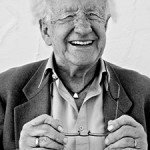Positive peace – what is that?
By Johan Galtung
January 5, 2015
Yes, what is it? Let us start this New Year on a positive note. Keeping in mind that peace is an honor word, like health, salvation for many: a focus of dreams and wishes, a summum bonum that should be both very precise and amenable to professional peace work and kept open, filled with new dreams and aspirations. Like for health, new aspects come up all the time; for instance in positive psychology.
Peace presupposes absence, or low level, of violence, direct as well as structural, and of the cultural violence justifying the other two. But we can also go for a more limited concept: absence of direct violence, of killing and wounding with arms, hurting with words. And we should include the absence of the attitudinal side of that, hatred.
All these absences, or low levels we can live with, like mild diseases–myopia, having a cold–add up to negative peace. Peace as absence. Not to be scorned at in any way, but only a step to peace. The typical case would be two states having nothing to do with each other; whether because they never did or decided better so, like a couple separating or divorcing. Another typical case would be real armistice, ceasefire not used to smuggle in arms or combatant rest, for redeployment. “Passive co-existence” covers negative peace quite well.
But any theory of peace has to go beyond that, at the micro level within-between persons; meso between social groups across faultlines; macro between states, nations; mega between regions, civilizations. And yet peace is an almost uncharted territory. Many rest content with the formula “win-win”, but that only means that they achieved the goals in the underlying conflicts, nothing more, nothing less.
Violence means that something bad is flowing between parties hurting each other; negative peace that nothing is flowing; positive peace that something good is flowing between parties being good to each other. I have found these five levels of positive peace fruitful.
Equity, cooperating for mutual and equal benefit, aka friendship;
Harmony, sharing joys and sorrows, high on empathy, aka love;
Organization of equity – harmony, aka transcendence-institution;
Fusion, total peace, aka pax omnium cum omnibus, sui generis;
Afterlife, in others, in Heaven, aka as Mutual Assured Bliss, MAB.
European countries start cooperating after centuries of warfare; then feeling for each other; then comes Community (Council, Commission) as institutions solidifying equity-harmony; then Europe as an overarching actor accommodating member states peacefully; then inspiring others.
At the micro-level it starts as friendship from cooperation, love from shared concerns, sealed in marriage, over age the partners may fuse into one actor, the couple, then living on in the progeny.
Correspondingly, working with five levels of violence may also be fruitful, in the usual sense of generating theory and practice:
Violence, harming Other; with polarization and dominance relations;
Hatred, sorrow at the joy of Other, joy at the sorrow of Other;
Organization of violence-hatred, aka transcendence-institution, war;
Fusion, total war, aka bellum omnium contra omnes, sui generis;
Afterlife, in others, in Hell; as Mutual Assured Destruction, MAD.
The violence can be structural: War = Misery, Total war = starvation.
The building blocks for positive peace are friendship and love, for war violence and hatred; one behavioral, one attitudinal. Generally friendship precedes love and violence precedes hatred; but there is “love at first sight” and no doubt “hatred at first sight” maybe because of so much of either that only an object is needed. We may talk about a behavioral, or attitudinal, road to peace and war.
Underlying violence is contradiction, incompatibility, conflict; solving, transforming that conflict is crucial for violence reduction.
Underlying peace is “condition”, compatibility of goals; creating that condition is crucial for building ever more peace.
The next three stages take violence and peace to higher levels.
Organization: something new transcending, institutionalizing, solidifying the two components: a community, a marriage, for peace at macro and micro levels; a war for violence, at all levels.
Fusion: a new actor, of its own kind, sui generis, is born: Europe, the couple, for lasting peace among the parties: the Hobbesian state of affairs for lasting war, approximated by security-oriented, paranoid states–not as Hobbes’ state of nature–and egocentrism.
Afterlife: with a secular interpretation as merits-demerits humans leave behind in others, like parents passing to their offspring patterns of peace or war as dominos through time; with a religious interpretation as life in the thereafter, as peace in Heaven, and as violence in Hell. A peace concept should accommodate both.
What a range from MAD to MAB, and humans are capable of it all!
From negative peace down to violence-hatred, or up to friendship-love. Institutionalized, friendship-love as peace, violence-hatred as war. Then, fusing in space, into a new actor or general state of affairs. And fusing in time through chains of positive or negative inspiration, eternalizing as Heaven and Hell, Nirvana or Samsara. As MAB and MAD.
We sense a problem: institutionalization – as organization or at a higher level as fusion – may take the freshness out of friendship-love, and also out of violence-hatred. The latter is often intended: being anti-human to victims and most perpetrators, institutionalization may be needed to sustain violence and hatred (like officers walking behind to kill their own soldiers trying to escape). And we sense parties in love wanting to live together without the seal of institutionalized marriage and states preferring identity to region absorption, vide EU. But organization may be useful, fusion may happen, afterlife is life.
The peace formula uses equity and harmony, adding at all points
Equity X Harmony
Peace = —————–
Trauma X Conflict
on the complex non-linear road from war to peace, from MAD to MAB: for traumas: conciliation, for conflicts: solution; with depolarization, de-domination. Idealism and professionalism, hand in hand.
First published by Transcend Media Service here.
